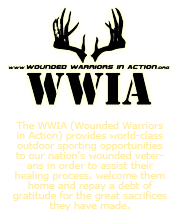Walleye, Sauger And Hybrid Regulations To Change On Lake Koshkonong And Connected Waters
Contact(s): Travis Motl, Fisheries Biologist, 920-387-7873, Travis.Motl@wisconsin.gov
March 13, 2020 at 3:46:48 pm
Fort Atkinson, Wis. - Effective April 1, anglers looking to harvest walleye, sauger and hybrids from Lake Koshkonong and connected waters may only keep three fish in total per day of a minimum of 18 inches in length. The continuous open season on these waters will remain in place.
The 18-inch minimum length limit and daily bag limit of three will apply to:
- Lake Koshkonong;
- the Rock River from the Indianford dam upstream to the lower Watertown dam;
- the Bark River from the mouth upstream to the former Hebron Dam at Highway 106;
- the Crawfish River from the mouth upstream to and including the Highway 19 bridge;
- Busseyville (Koshkonong) Creek from the mouth upstream to County Highway B;, and
- the tributaries of these rivers up to the first dam in Dane, Jefferson and Rock counties.
The new size and bag limits will be more restrictive for these waters to reduce harvest pressure, but will still provide quality angling opportunities. Creel surveys (in 2019?) suggest that walleye were the species most frequently targeted by anglers. The Wisconsin Department of Natural Resources also estimated that walleye exploitation rates, obtained from a long-term tagging study, averaged over 40%, which exceeds the 35% threshold for sustainable harvest. Additionally, the recruitment of young walleye into the adult population can be highly variable based on annual fall fish surveys.
"This regulation change will help increase the density of adult walleye and hopefully reduce the need for walleye stocking in these systems," said DNR fisheries biologist Travis Motl.
Millions of walleye fry are stocked annually from the Bark River Fry Hatchery, a cooperative effort of Horicon Fisheries staff and Friends of the Bark River Fry Hatchery. In addition, hundreds of thousands of small fingerling walleye are stocked in the system every other year from state hatcheries.
The department proposed the new regulation through the spring fish and wildlife hearings in April 2019 and previous years, during which the public in each county had an opportunity to provide input. Common questions asked during the public input process included why sauger were included in the new regulation.
An important part of the success or failure of a regulation is its enforceability. Department law enforcement reviewed the regulation and felt that making the regulation consistent across the visually-similar species and their hybrids would improve enforceability. Another frequently-asked question was whether a slot limit would be a better option. Currently, a slot limit is not a standard option in the suite of regulations used in walleye management outside the ceded territory. Further, successful walleye fisheries managed with a slot limit do not rely on intensive stocking like the Lake Koshkonong system but instead rely on consistent natural reproduction to produce young walleye each year.
Growth estimates from 2018 aging data suggest that the average walleye from the Lake Koshkonong system grows faster than both the statewide and southern Wisconsin averages. Therefore, walleye will reach a harvestable size quickly.
"Our estimates show walleye from the Lake Koshkonong system reaching 18 inches in 4-5 years," Motl stated. "This is a very productive system, and we're looking to manage for a high-quality walleye fishery."
To learn more about fishing regulations, visit the DNR website here.











